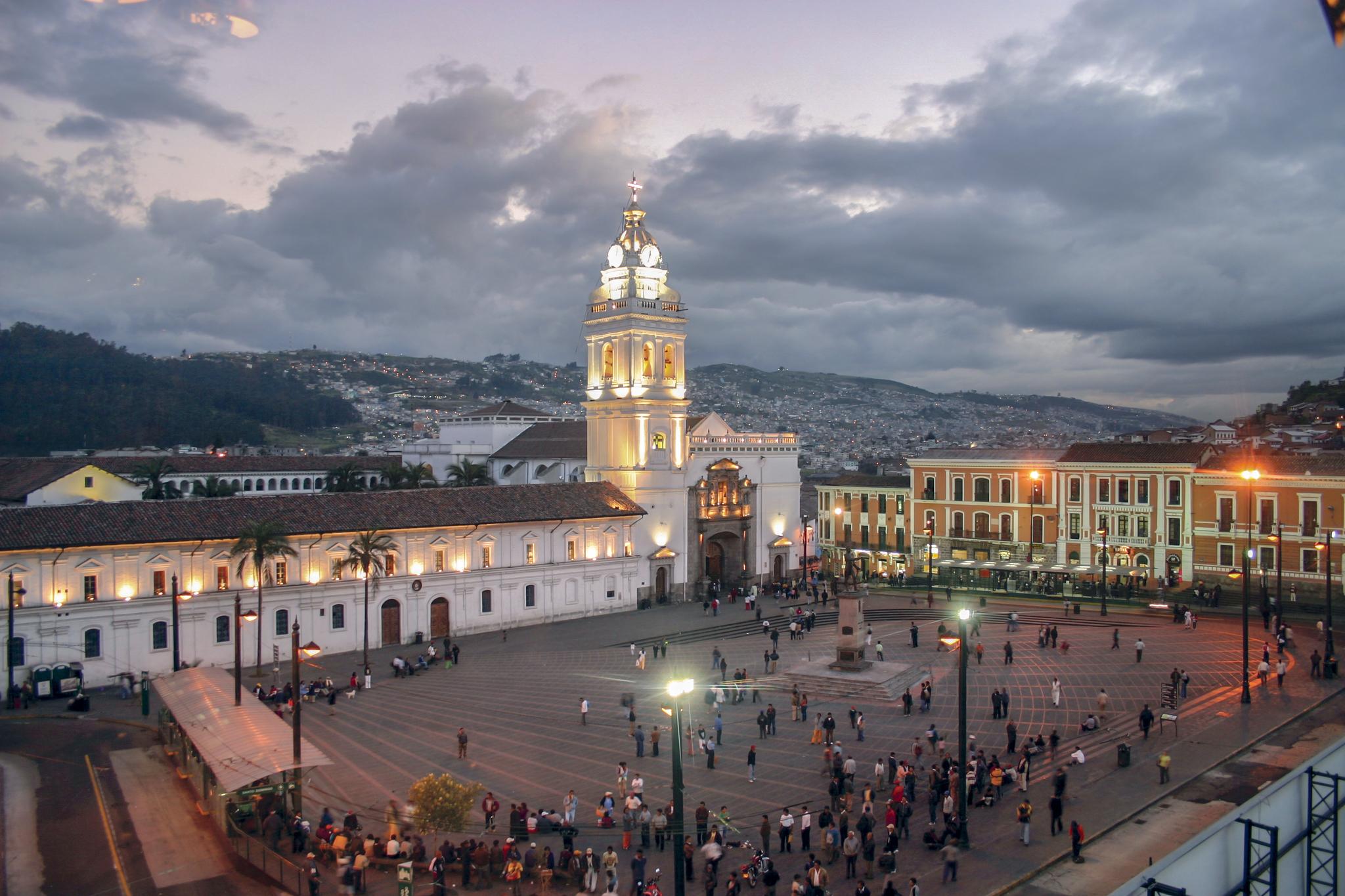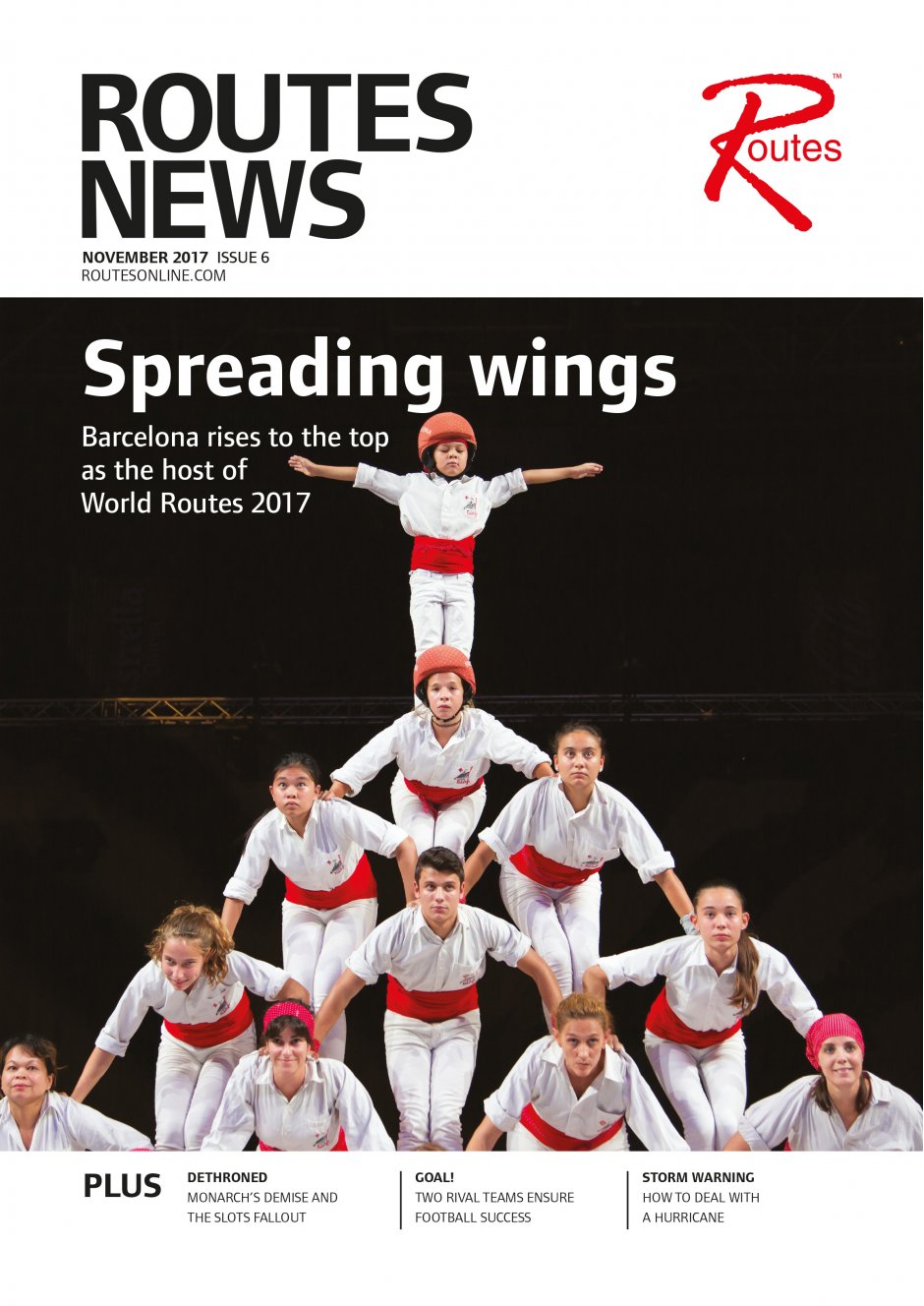
The key role of the Galapagos Islands in refining Charles Darwin’s theory of evolution has long been recognised. So it is no surprise that they are being used by Quiport, which built Mariscal Sucre International Airport and has operated it since its opening in February 2013, and Quito Turismo Board to promote both the Ecuadorian capital and airport.
While the two joint hosts for the forthcoming Routes Americas 2018 agree that the internationally famous islands can help drive Quito’s own tourism figures, the city’s tourism bosses stress they are only one aspect of a visit to Ecuador. Quiport CEO Andrew O’Brian says: “We get visitors from all over the world and some of them only stay for a few days in Quito as they want to go to the Galapagos.
“We need to put a lot more of the focus on the wonderful attractions in the city and particularly the historic centre. We’re working closely with Quito Turismo to make sure it is a highlight of their stay.”
Verónica Sevilla, the CEO for Quito Turismo, agrees that the Galapagos Islands do help attract tourism, but that Quito also has a lot to offer on its own.
 This article first appeared in Routes News edition 6 2017
This article first appeared in Routes News edition 6 2017
“Obviously Quito is well known for its links to the Galapagos Islands and it’s certainly on most people’s bucket lists,” she adds. “We want to show the world that Quito is a place to come as it is a destination in its own right. It is not just an entrance to pass through but a place to stay and enjoy.
“Quito is a place to spend at least three nights so we need to take advantage of what we have here. It is a great destination with a fantastic cultural heritage too.
“It is also in the middle of the Andes and it is surrounded by mountains and many different climates, giving it one of the most diverse environments in the world.”
Expanding the horizon
Sevilla says with the wealth of tourism attractions, she would like to see visitors in Quito before they go to other regional attractions including the Galapagos, the Amazon basin and, further afield, Machu Picchu. She adds: “Tourism is the most democratic industry in the world. When you develop tourism you earn money for a man making handicrafts or someone who owns a hotel. Tourism gives financial options to all levels of society.”
Thanks to his own experiences, O’Brian is confident that hosting next year’s Routes Americas will give the city the boost that it needs. He adds: “In 2011 we hosted the event when I was CEO of Aerodom in the Dominican Republic. It was a really great event and made us a lot of connections and it brought a lot of attention to Santo Domingo.
“When I came here to look at this project with a new greenfield airport with Quito in 2012, one of the things I asked was ‘why aren’t we going after hosting a Routes event?’
“It is a great opportunity for us to highlight the city as a wonderful destination. When people come here they are surprised to find out how culturally rich this city is. We also have a new airport which is winning many awards and getting good recognition, so we want airlines to see that first hand.
“We want to wow the delegates with the airport and we want to wow them with the city. We usually meet 15 to 20 airlines during a Routes event but we think we’ll meet over 20 airlines next year as part of being the host of the event.”
Sevilla agrees the hosting of Routes Americas provides Quito with a one-off opportunity to present its best face to the world’s events delegates. She says: “As well as the first opportunity for us to promote the city and its tourism it also allows us to promote the connectivity of the city so we can have more flights coming in. It’s a strategic point and we have to develop it.
“We need to grow the connectivity of the city, we need to show off our city so and also show airlines and other potential partners the airport and all the facilities that we have so they know they can operate here.”
Nor is it simply the leisure tourism market that Sevilla hopes will be given a boost by hosting the event. She adds with business travel growing 20 percent globally compared with a 14 percent leap in leisure travel, the corporate market is a definite target.
Big business
The new Metropolitan Convention Centre is currently under construction with completion expected in the second half of 2018. Once open, Sevilla is confident it will help Quito become a leading corporate events and MICE hub in South America.
She adds “It will have some of the best facilities and features of all the business centres in South America. We are also investing a lot in promoting the city to business associations to promote conventions and conferences around the world.”
She also believes the strategy will be further assisted by Quito’s relatively benign weather, adding: “It doesn’t depend on what season it is elsewhere, we have spring all year round. If you want to hold an event or conference here you can have it at the time that best suits you and still have great weather.”
O’Brian agrees the corporate market offers a number of opportunities, adding: “That’s certainly an area that we work hard on. When we sit down with our airline partners we look at our business customers and how we can grow the business cabin.” However, this is not to say there are not problems to overcome in the process. In particular O’Brian knows how competitive the world of route development can be in the first place.
He says: “Developing a route is not an easy task, it involves a lot of planning and airlines will be considering the whole region from the point of view of their networks. We need to continue to work strategically with our stakeholders and even competing airports to understand how to better position ourselves to really take advantage of these common opportunities.
“We offer landing fees discounts to our airline partners, but we know that sometimes that is not enough. Therefore, we have to think creatively in developing support packages.
“We’re getting better at it but those are the issues we have to overcome. We need to make sure we’re positioning ourselves to offer what our current and future customers are looking for as they introduce a route.
“We have plenty of capacity which is key to our success in bringing in the airlines like jetBlue and if we really listen to our customers, then the rest becomes a lot easier.”
Sevilla agrees that Quito still has room for improvement as a tourist destination but strongly believes the solutions are well known. Instead, she argues it is a question of implementing them correctly.
She says: “The problems this city has are the same problems every city has, you have to work on transportation and other facilities for tourism. We are working on the facilities for disabled people and you have to have easy ways for travellers to find the information they require.
“We are also hoping to encourage more people who live and work in the city to speak English.”
Perfecting campaigns
While Sevilla also admits to the most common problem facing tourist boards, a finite budget that does not always stretch to a desired promotion, she believes creative marketing aimed at targeted consumers still generates good results. Similarly, the need to demonstrate effective ROI at Quito Turismo means every campaign is closely analysed to make sure any mistakes are quickly rectified.
And Sevilla believes many of the solutions to these problems are already being implemented. Work is under way to make Quito more accessible to disabled people as part of a declared strategy to target the market.
“As many as 15 percent of the world has [some form of] disability but they still want to have the opportunity to travel,” she says. “However, it can be very difficult for them to find a destination that suits their needs and is welcoming and friendly.
“It is a huge strategy to target them and it is something we are working on. We want to be leaders in thinking of the needs of all the people in the world and making sure we are meeting them.”
Meanwhile, O’Brian says the airport is also engaging with a corporate responsibility strategy and expects the airport to be carbon neutral within the next two years.
He adds: “Since we opened this airport four years ago we’ve been really focused on the corporate social responsibility here in Ecuador and we have sustainability projects with our communities. We have more than 100,000 people in the Quito area that have benefited and that is huge in a developing country.”
All of this adds up to a strong argument for both new routes and increased capacity on existing ones and as the host of Routes Americas 2018, O’Brian is confident that a number of conversations should lead to the results Quito desires. Which would indeed be a significant evolution both for the city of Quito, and its airport.
